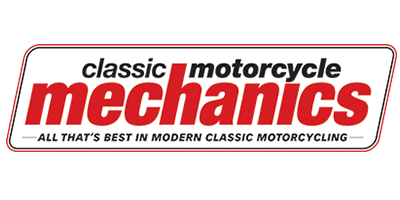It’s incredible to see the Honda CB750 Sandcast increase in value at such a phenomenal rate, delivering their owners’ tax-free returns. Will they continue to increase in value? Undoubtedly, especially with one more of the original six prototypes about to come on the market. We will wait to see what it achieves. Such machines usually set the tone for where prices for non-prototype motorcycles of that type are heading in the future. However, most of the machines in the market are not investment grade classic motorcycles.
There are many reasons for this, but I will shortly write an article, with pictures, showing how we saved a beautiful example after the crankcases suffered damage from a previous mechanic. This is just one, of many areas, of problems with these iconic, historic machines. There is an awful lot of due diligence to be done in numerous other areas, but this article will only deal with the crankcases.
There are big problems with these fifty year old classic Hondas and they stem from the great story behind this iconic classic motorcycle. Kawasaki were about to release their 750cc four cylinder superbike while Honda were developing their rival machine. The engineers at Honda realised that they could beat Kawasaki into the market by three weeks if they “Sandcast” their motors. “Sandcast” is a misnomer, they gravity cast them. The die to make the aluminium cases would be full of air and molten aluminium was poured in and filled up the die through gravity. The molten aluminium would become considerably aerated, like an Aero bar, and the cast pieces would be weak and brittle, in comparison to a die cast piece. With a die cast motor, the aluminium is compact and dense and very strong.
Chains, if not correctly adjusted, jumped off of sprockets damaging the crankcases. This can be impossible to spot unless a prospective seller allows a prospective buyer to remove sprocket covers to inspect. Other areas that are susceptible to damage are the oil pressure switch and around the neutral switch, which holds the gear selector drum in place. The cases are very fragile indeed and many machines have damage which has been disguised. Never buy a machine that you can’t see running, take it through the gears and keep it running for at least half an hour. Check for oil leaks and investigate them thoroughly. Check to find out if the cases are a matched pair. As each pair was cast and drilled individually, if the lower case is from a different pair of cases to preserve the engine number, then the machine is pretty much scrap. There are numerous machines being imported that have been built up in the scrap yards of the USA. They will never be worth anything like an investment grade example and they will never be reliable.
If a motor requires rebuilding, be aware that most of the threads in that fifty year old aluminium will require time-serts or helicoils. The threads were very fragile from the day they were built and do not hold up well with the passing of time. Any motors that are noisy should be avoided, as there are severe weaknesses in the cylinder heads.
There is a lot of debate about whether these cases were painted or not. I have bought many Sandcasts and, after much investigation, they were painted to match the barrels and heads. If the cases have had previous damage welded professionally then, depending on the damage sustained in the first place, this can be perfectly acceptable. The repair should not be dressed and disguised as it will weaken the repair and it will always be visible, even if dressed. An honest repair is fair enough if it has been done properly. For cases to be repaired, the motor has to be stripped empty, a jig built to prevent the cases from warping, and then they need to be heated to 200 degrees centigrade, welded, heated and welded etc. Then they need to be returned to the oven to cool. Do be aware that painted cases can cover up a myriad of crankcase damage and a botched repair.
Many of the original Sandcasts had their motors replaced with a die cast unit under warranty, so finding a good, original Sandcast is a very rare machine indeed. To find a rideable one with all the original parts all present is extremely rare indeed.
Do not buy anything with powder coat anywhere on the bike. It is completely the wrong finish for any motorcycle and causes structural problems over time. We always strip any motorcycle of powder coat and you will never find any high end classic motorcycle, such as a Ducati Green Frame, with a powder coated frame and for very good reason.
These machines are incredible to own and great investments, but unless you know you have got exactly the right one, you could be entering into something that costs more than it will ever be worth. Do the due diligence and if you are in any doubt, then find another machine. These are not vintage motorcycles to be bought by enthusiasts without professional help. They offer stunning returns on your investment, but they should always be bought by a professional who offers due diligence and a guarantee. If you are looking for a beautiful Sandcast, call The Motorcycle Broker and you know your investment is safe. We are specialists in investment grade vintage motorcycles.
- Most collectible Ducati 916 SP - June 20, 2024
- Classic Motorcycles: To ride or not to ride? - June 17, 2024
- Classic Motorcycles: To ride or not to ride? - June 17, 2024







